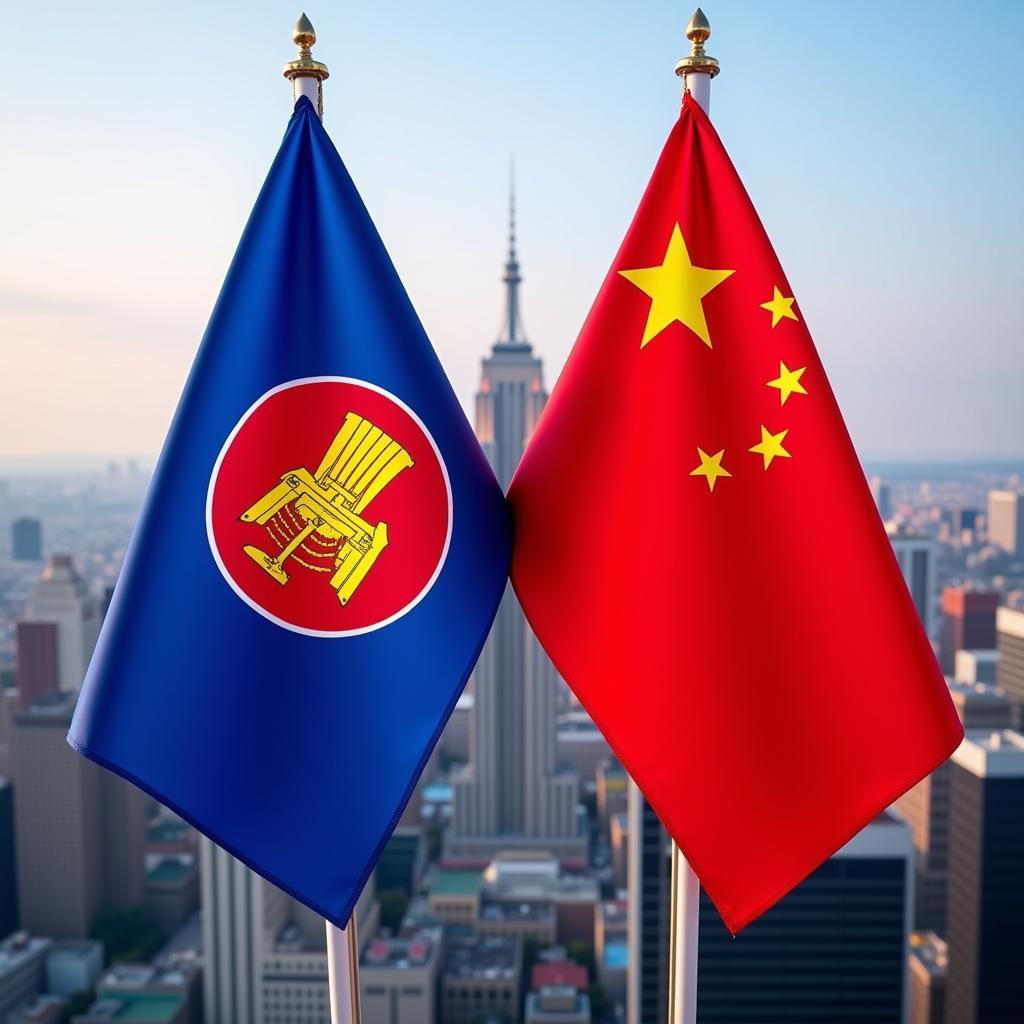ASEAN and China: an evolving relationship marked by intricate dynamics of cooperation and competition. This article delves into the multifaceted aspects of this crucial partnership, exploring its historical context, economic interdependence, geopolitical implications, and future prospects.
A Historical Overview of ASEAN-China Relations
The relationship between ASEAN and China has traversed a complex journey since its inception. Early interactions were marked by suspicion and ideological differences, particularly during the Cold War era. However, the post-Cold War period witnessed a gradual thaw in relations, culminating in the establishment of a sectoral dialogue partnership in 1991. This paved the way for increased engagement in various areas, including trade, investment, and cultural exchange. The signing of the ASEAN-China Free Trade Agreement (ACFTA) in 2002 marked a significant milestone, solidifying economic ties and laying the foundation for deeper cooperation.
This evolving relationship is further highlighted by the various forums and mechanisms established for dialogue and cooperation. The ASEAN Regional Forum (ARF), established in 1994, provides a platform for discussing security issues, while the ASEAN Plus Three (APT) framework, which includes China, Japan, and South Korea, facilitates cooperation on economic and financial matters. These mechanisms have contributed to building trust and fostering a more stable and predictable relationship.
Economic Interdependence: Opportunities and Challenges
China’s rapid economic growth has had a profound impact on ASEAN economies. China is now ASEAN’s largest trading partner, and ASEAN is among China’s top trading partners. This economic interdependence presents both opportunities and challenges for ASEAN member states. On the one hand, access to the vast Chinese market has fueled export-led growth in many ASEAN countries. Chinese investments have also contributed to infrastructure development and job creation. On the other hand, some ASEAN countries face challenges in competing with Chinese goods and attracting foreign direct investment. Managing this economic relationship effectively is crucial for ensuring mutual benefits and sustainable development. Concerns regarding trade imbalances, market access, and intellectual property rights need to be addressed through ongoing dialogue and negotiation.
Geopolitical Dynamics and the South China Sea Dispute
The South China Sea dispute remains a major point of contention in the ASEAN-China relationship. Overlapping territorial claims and maritime disputes have heightened tensions and pose a threat to regional stability. While ASEAN and China have made efforts to manage the dispute through diplomatic channels, including the negotiation of a Code of Conduct (COC), progress has been slow. Finding a peaceful resolution to this complex issue is essential for maintaining a stable and cooperative relationship. The involvement of external powers in the South China Sea also adds to the complexity of the situation, highlighting the need for a multilateral approach to conflict resolution.
What Does the Future Hold for ASEAN and China?
The future of the ASEAN-China relationship remains uncertain, shaped by a complex interplay of economic, political, and security considerations. While economic cooperation continues to deepen, geopolitical tensions persist. The ability of both sides to manage their differences and find common ground will determine the trajectory of their relationship in the years to come. Strengthening existing mechanisms for dialogue and cooperation, such as the ASEAN-China Strategic Partnership, is crucial for building trust and addressing shared challenges.
How can ASEAN and China enhance their cooperation?
Enhancing cooperation requires a multifaceted approach. Focusing on areas of mutual interest, such as trade, investment, and infrastructure development, can strengthen economic ties. Promoting people-to-people exchanges through education, tourism, and cultural programs can foster greater understanding and goodwill. Addressing non-traditional security challenges, such as climate change, pandemics, and cybersecurity, can further enhance cooperation.
What are the key challenges in the ASEAN-China relationship?
The key challenges include managing the South China Sea dispute, addressing trade imbalances, and navigating geopolitical competition. Building trust and fostering open communication are essential for overcoming these challenges and building a more stable and mutually beneficial relationship.
Conclusion
The ASEAN-China relationship: an evolving dynamic characterized by both cooperation and competition. Navigating this complex relationship requires a nuanced understanding of its historical context, economic realities, and geopolitical implications. By fostering open communication, addressing shared challenges, and building trust, ASEAN and China can work towards a more stable and prosperous future for the region.
FAQ
- What is ACFTA? ACFTA is the ASEAN-China Free Trade Agreement.
- What is the main issue in the South China Sea? Overlapping territorial claims and maritime rights are the main issues.
- Who are ASEAN’s biggest trading partners? China is ASEAN’s largest trading partner.
- What is the ASEAN Plus Three framework? It’s a cooperation framework involving ASEAN, China, Japan, and South Korea.
- What is the ARF? The ARF is the ASEAN Regional Forum, a platform for discussing security issues.
- How can ASEAN and China improve relations? Through enhanced dialogue, cooperation on shared challenges, and managing disputes peacefully.
- Why is the ASEAN-China relationship important? It is crucial for regional stability, economic growth, and addressing global challenges.
 Image of ASEAN and Chinese flags side by side symbolizing future collaboration
Image of ASEAN and Chinese flags side by side symbolizing future collaboration
51st asean ministerial meeting
Need support? Contact us 24/7: Phone: 0369020373, Email: aseanmediadirectory@gmail.com, or visit us at: Ngoc Lien Village, Hiep Hoa, Bac Giang, Vietnam.


